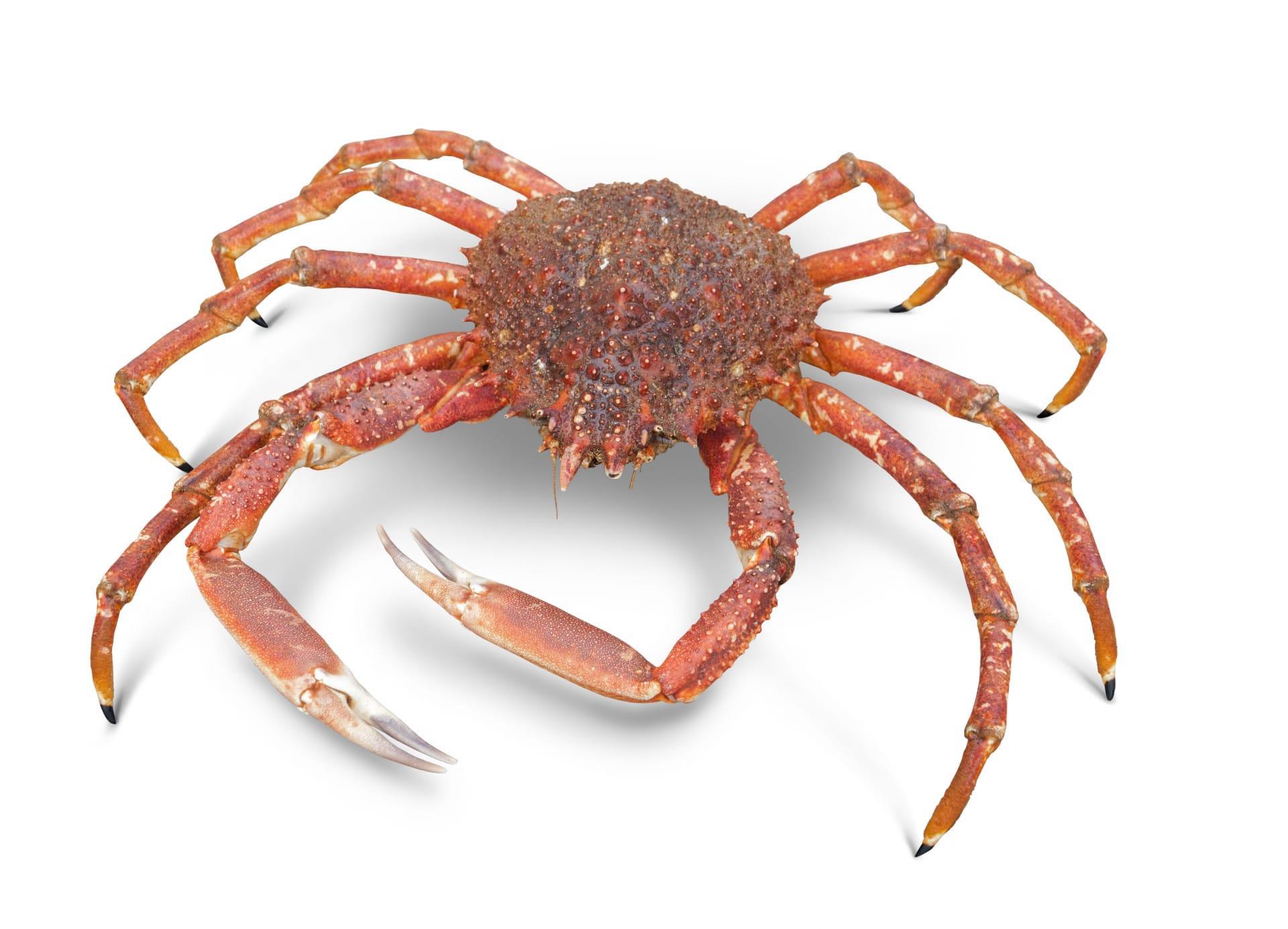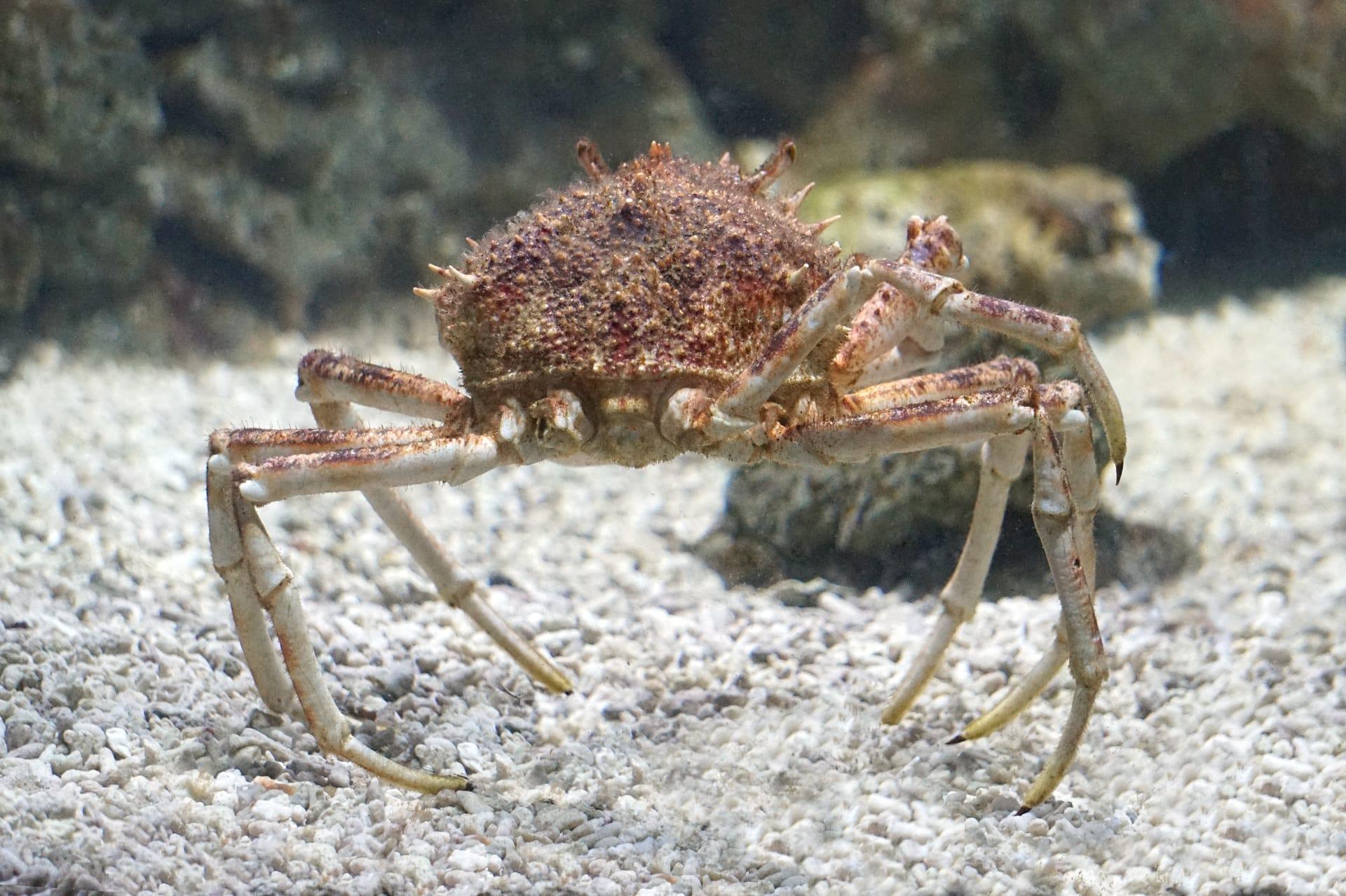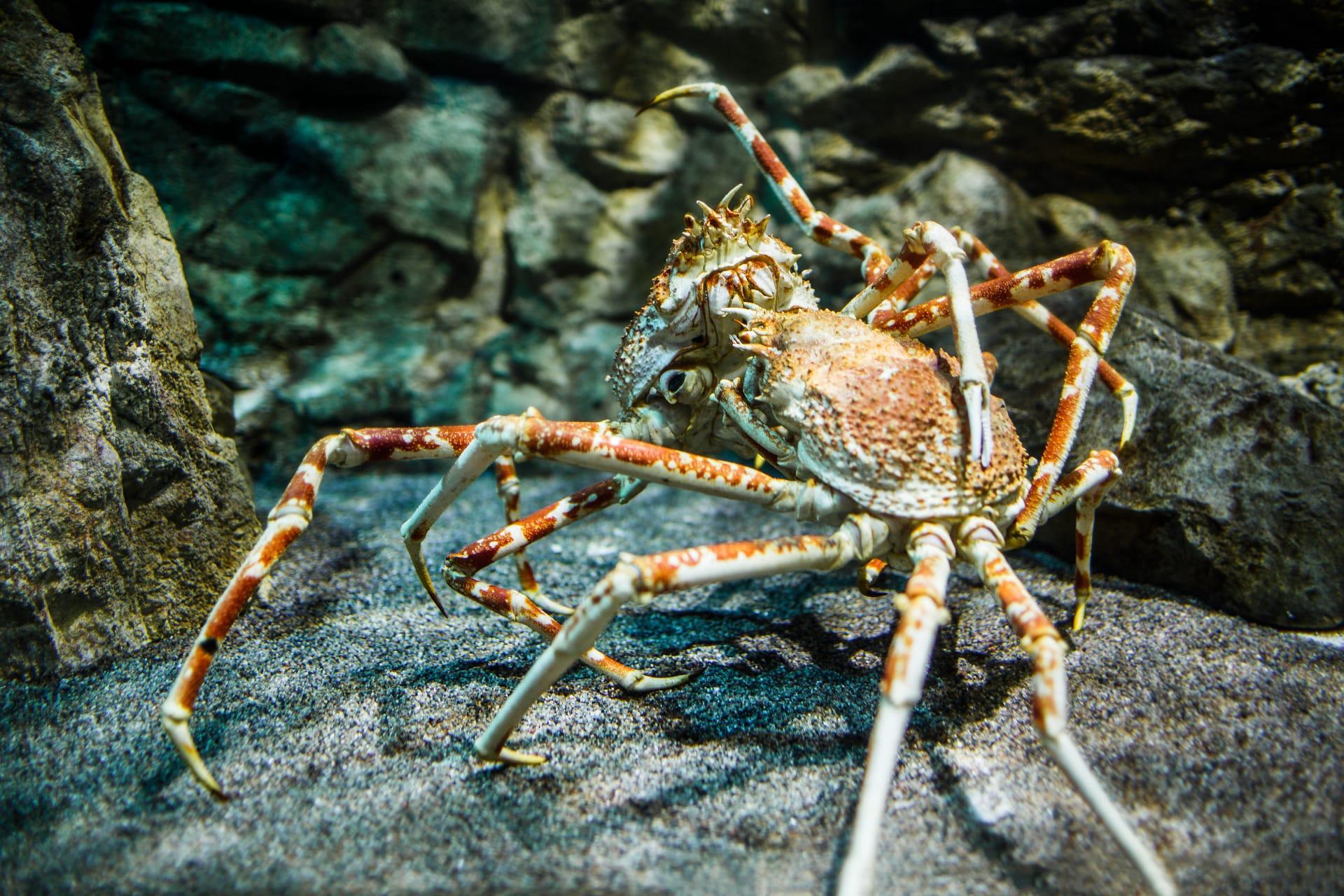Spider Crab Trivia
- Home /
- Trivia Question /
- Animal /
- Spider Crab Trivia
1
Question: How large can a spider crab grow?
Answer: The Japanese spider crab, a species of spider crab, holds the record for the largest leg span of any arthropod, reaching up to 12 feet (3.7 meters) from claw to claw. This incredible size makes them one of the ocean's most imposing creatures. However, their bodies are much smaller, measuring only up to 16 inches (40 cm) in diameter.
Question: What is the lifespan of a spider crab?
Answer: Spider crabs can have surprisingly long lives. The Japanese spider crab, for example, can live for up to 100 years. This remarkable longevity is uncommon among crustaceans, and it's partly due to their slow growth rate and the deep, cold-water habitats they prefer, which have fewer predators.

2
Question: Do spider crabs attack humans?
Answer: Despite their daunting appearance, spider crabs are not aggressive towards humans. They are generally docile creatures and primarily feed on plants and dead animals. Their large size and long legs are more for defense and foraging than for attacking.
Question: Are spider crabs poisonous?
Answer: Spider crabs are not poisonous and are, in fact, edible. In some cultures, they are considered a delicacy. Their meat is known for its delicate flavor and texture. It's important to note that like all seafood, they should be cooked properly to ensure safety.

3
Question: How do spider crabs reproduce?
Answer: Spider crab reproduction involves a unique mating dance, where the male lifts the female to deposit his sperm. Females can carry thousands of eggs under their abdomen, which they release into the water once they hatch. The larvae go through several planktonic stages before settling on the ocean floor and growing into adults.
Question: What is the main diet of a spider crab?
Answer: Spider crabs are scavengers and omnivores. They primarily feed on algae, plants, mollusks, small fish, and dead animals. Their diet contributes to cleaning the ocean floor, making them crucial for maintaining a healthy marine ecosystem.

4
Question: How do spider crabs adapt to their environment?
Answer: Spider crabs have an amazing ability to camouflage. They often cover themselves with sponges and other ocean debris to blend into their surroundings. This not only helps them avoid predators but also allows them to ambush prey. Their long legs and slow movements also aid in their disguise.
Question: Where are spider crabs commonly found?
Answer: Spider crabs inhabit various ocean floors worldwide, with many species preferring cold, deep waters. For example, the Japanese spider crab is commonly found in the waters around Japan, at depths of 50 to 600 meters (160 to 1970 feet). These environments provide them with ample food and protection from predators.

5
Question: Can spider crabs regenerate lost limbs?
Answer: Yes, spider crabs can regenerate lost limbs. This ability is particularly useful as they often lose legs due to predation or fights. Regeneration occurs during molting, where the crab sheds its old exoskeleton and grows a new one, including the regrowth of lost limbs over time.
Question: What role do spider crabs play in their ecosystem?
Answer: Spider crabs play a vital role in their marine ecosystems as scavengers. By consuming dead animals and plant matter, they help keep the ocean floor clean and recycle nutrients back into the ecosystem. This scavenging behavior also aids in preventing outbreaks of diseases that can occur from decaying organic matter.